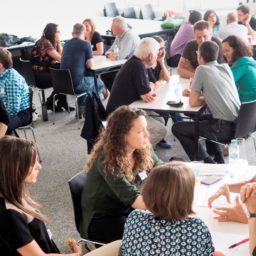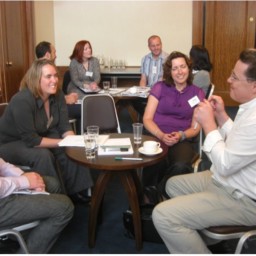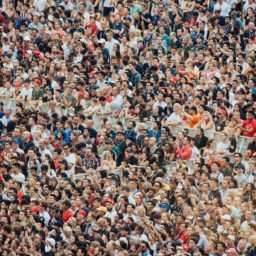
Abstract Current models draw a broad distinction between communication as dialogue and communication as monologue. The two kinds of models have different implications for who influences whom in a group discussion. If the discussion is like interactive dialogue, group members should be influenced most by those with whom they interact in the discussion; if it … Continue reading Group Discussion as Interactive Dialogue or as Serial Monologue: the Influence of Group Size Nicolas Fay, Simon Garrod and Jean Carletta (2000)

Deciding the optimum group size for a conversation or decision-making is critical in small group work. What is the optimum size? Over the years, in running my Knowledge Cafes, I have discovered through trial and error and observation that the ideal size of a group for interactive conversation is three or four people. At the … Continue reading What Is the Optimum Group Size for a Conversation? More than five people and it is not a conversation

Data from various settings suggest that there is an upper limit of about four on the number of individuals who can interact in spontaneous conversation. Abstract Data from various settings suggest that there is an upper limit of about four on the number of individuals who can interact in spontaneous conversation. This limit appears to … Continue reading Size and Structure of Freely Forming Conversational Groups Robin Dunbar, N. D. C. Duncan and D. Nettle (1995)

What is social loafing? Social loafing primarily happens when we unconsciously or consciously put less effort into a task when part of a group than when working alone. Why does social loafing happen? Social loafing can happen when we feel our contributions will not be noticed or will not matter in the larger context of … Continue reading Social Loafing The tendancy to put less effort into a task when we are part of a group

Over the years, in running my Knowledge Cafés, I have discovered through experimentation and observation that the ideal size of a group for interactive conversation is three or four people. The ideal size for small group conversations in a Knowledge Café is three or four people. Depending on the number of individuals taking part in … Continue reading Knowledge Café: Small Group Design The ideal small group size is three or four

The wisdom of crowds is the concept that large groups of people are collectively smarter than individuals regarding problem-solving, decision-making, and predicting. However, the method can be improved with the wisdom of crowds of crowds. In the concept of the wisdom of crowds, individuals in a group are privately asked to answer a question, such … Continue reading Wisdom of Crowds of Crowds Crowds within a crowd outperform ‘wisdom of the crowd’




